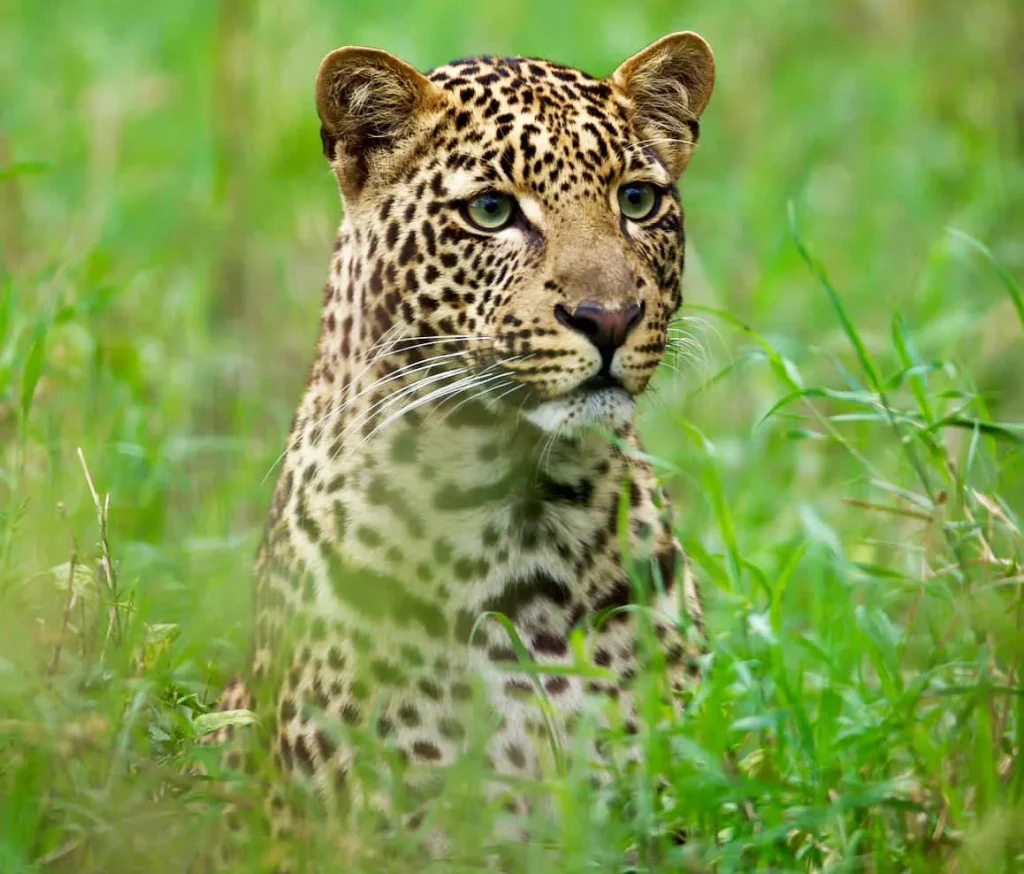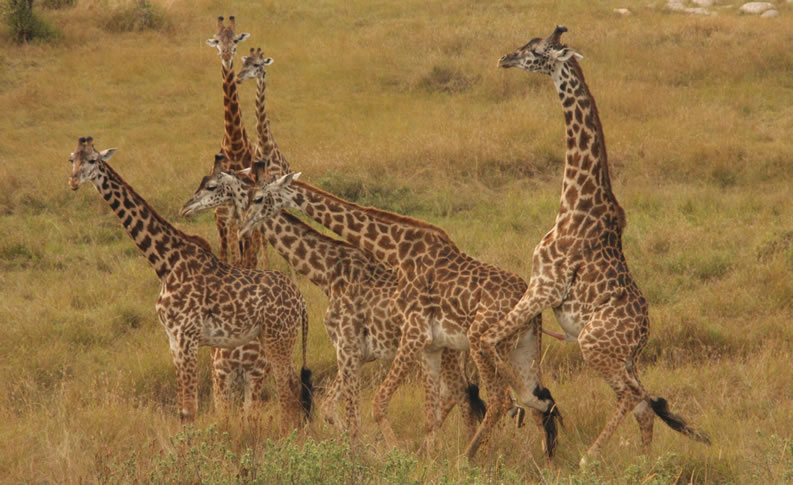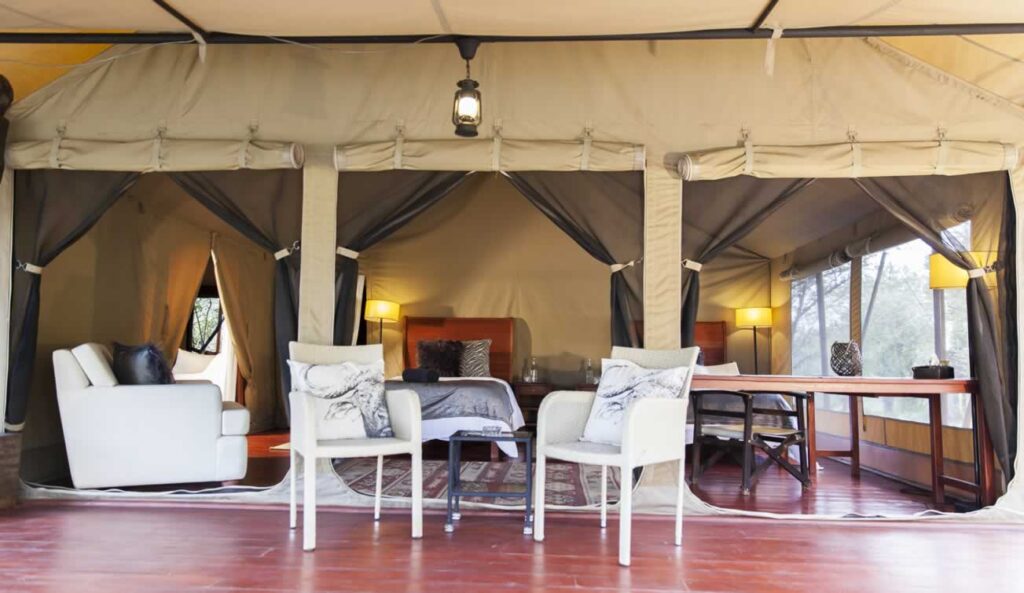Ol Pejeta Conservancy
Located between the foothills of the misty Aberdares and the snow-capped Mt. Kenya, Ol Pejeta Conservancy is in Laikipia, on the equator, west of Nanyuki. The conservancy is famous for housing the world’s two surviving northern white rhinos. It’s also East Africa’s largest black rhino sanctuary. For decades, Ol Pejeta has been working to protect the wildlife in the Laikipia Plateau. The non-profit conservancy sits on 360 sq. Km.
The History
The Ol Pejeta Conservancy dates back to colonial-era Kenya when the land was used for cattle ranching. Due to the lack of rainfall in the Laikipia Plateau, ranching was the best purpose for the vast crops of land in the region. Originally, the ranch covered 230 sq. Km, which expanded under the management of John and Jane Kenyon. Ol Pejeta has had several owners over the years. As cattle rearing became less profitable, it was necessary to reinvent the business. Declining wildlife populations in the region presented new opportunities to utilize the land.
Fauna and Flora International, a UK-based conservation organization, bought the ranch and the surrounding lands in 2004. Arcus Foundation, a private charity organization, provided the $15-million funding. The international non-profit collaborated with the Lew’s Wildlife Conservancy and the FFI to acquire the land. Another $12-million contribution from the Arcus Foundation served as the capital, hence, enabling Ol Pejeta Conservancy to focus on its mission of championing local community development and conservation.
The Arcus Foundation continues to support Ol Pejeta as part of the board of trustees with the help of other initiatives. In 2014, the conservancy received the IUCN Green Listing, a status that demonstrates excellence in the management of natural areas.
Ol Pejeta Wildlife
The conservancy proved its successful wildlife protection efforts with impressive game viewing opportunities. Although the animal viewing circuit is small, Ol Pejeta promises diversity. It features the big five. So, expect to see an elusive leopard, a lion hunting, an African Elephant strolling around the savannah, the Cape buffalo or a rhino. Sightings of the black and white rhino are regular. Ol Pejeta has a high predator density. Besides the big cats, the region is home to the endangered African wild dog. Several other endangered species are present at OPC. They include Grevy’s zebra, beisa oryx and Jackson’s hartebeest.
Ol Pejeta has special game corridors that let animals move in and out of the conservancy freely. The corridors have knee-high posts that are no problem for most animals. However, rhinos can’t get through them, thus, preventing them from wandering into dangerous territories where they could encounter poachers.
Sweetwaters Chimpanzee Sanctuary
Another reason to visit Ol Pejeta is to see the chimpanzees at the Sanctuary. The Sweetwaters Chimpanzee Sanctuary takes in rescued, orphaned, and abandoned chimpanzees. It’s the only place in Kenya where you can see the species since they are not indigenous to the region. The Sanctuary opened in 1993 to provide a home for abused and orphaned chimpanzees from central and West Africa. Its first residents were three orphans from Burundi that had to be evacuated during the civil war. Since then, the facility has taken in more than 40 chimpanzees from different areas.
Visit the Sanctuary to witness this intelligent species thrive in a conducive environment. Chimpanzees brought to Sweetwaters get medical attention and other necessary care before being released into the natural enclosure. Guests can watch the primates during feeding time and other enrichment activities for a truly remarkable experience.
Conservation Activities
Ol Pejeta Conservancy offers visitors an array of things to do that promise interesting adventures.
Bush and bird walks take visitors around the region, allowing them to take in the sights, smells and sounds at a leisurely pace. With the guidance of experienced rangers, you can marvel at everything the Sanctuary offers. The charm of safari walks is that you can interact with the wild more intimately than on a game drive.
Lion tracking is another thrilling activity, where you can have fun while learning more about the King of the Jungle. Guests are taught how to distinguish lions from their whisker patterns, ear tears, the colors of their noses, and other traits. The Sanctuary equips a few lions with radio collars that trackers can follow throughout the wild. When the guide spots a pride, visitors have the chance to identify specific animals using the lessons learned. Guests can also help the Sanctuary collect vital data for the ecological monitoring department.
Do you want to see what the animals are up to when it gets dark? Then a night game drive should be on your itinerary. You can elevate your safari with a drive after sunset that lets you enjoy nature at its best. The cover of darkness means that nocturnal animals come out to play. Catch a glimpse of a bat-eared fox, a zorilla, or an African wildcat illuminated by a spotlight. If you are lucky, you can spot predators as they prowl through the savannah for their evening meals. Besides the wildlife, drink in the spectacle of the night sky as it stretches beyond the gorgeous Laikipia landscape.
The dry months of June to September and December to February are perfect for tracking wildlife. Roads are also dependable during this period, thereby, simplifying access. However, expect large crowds. Due to its proximity to the equator, Ol Pejeta boasts nice weather. Early mornings tend to be chilly, though, courtesy of the altitude. The dry months have low chances of rain, but the wet seasons guarantee rainfall.



